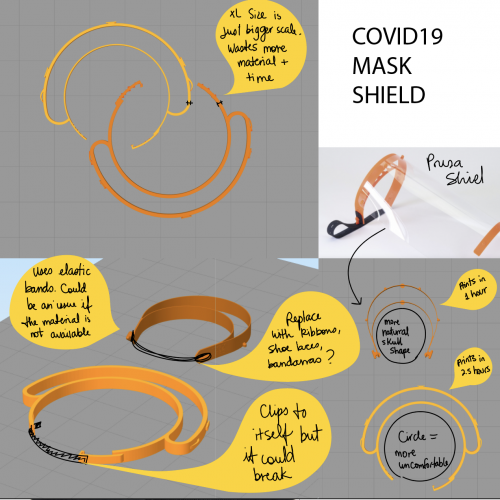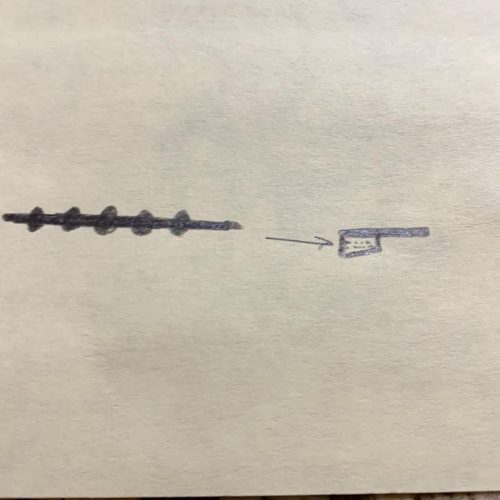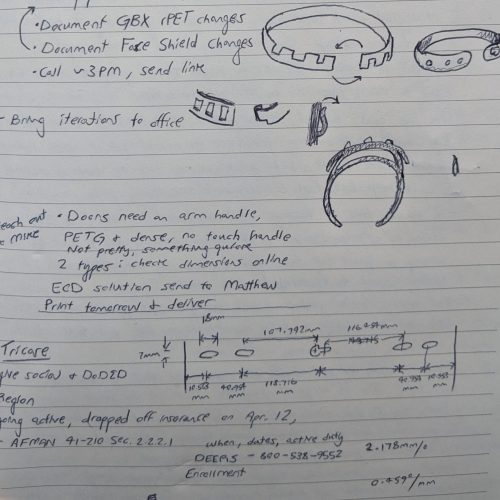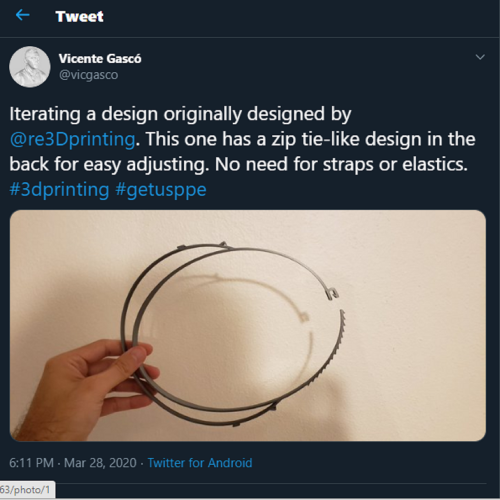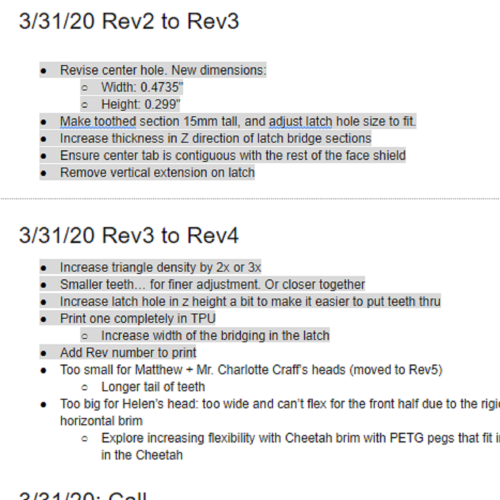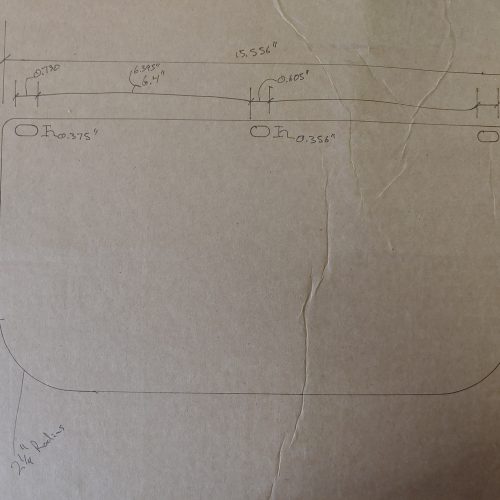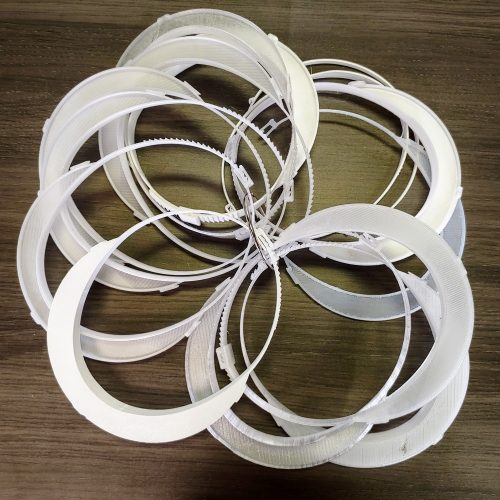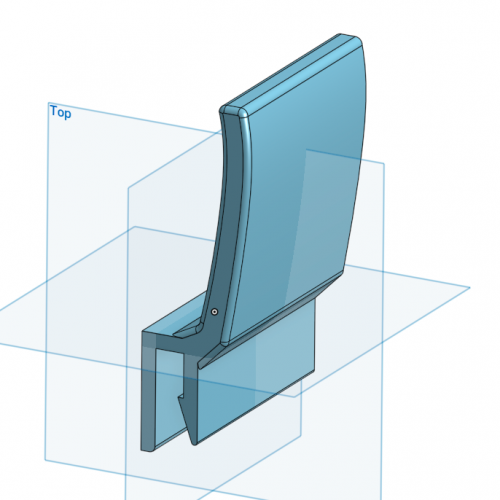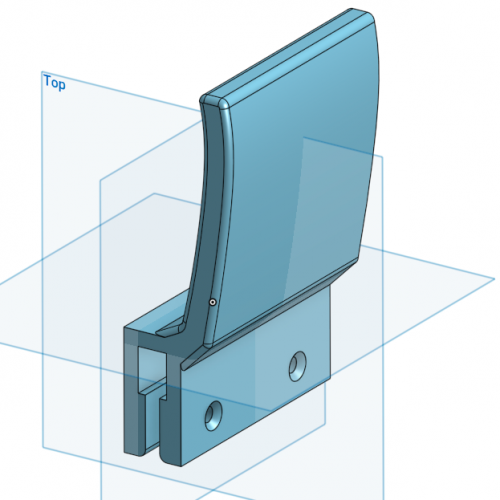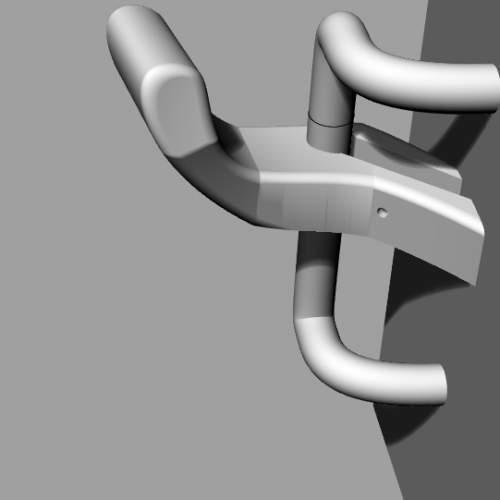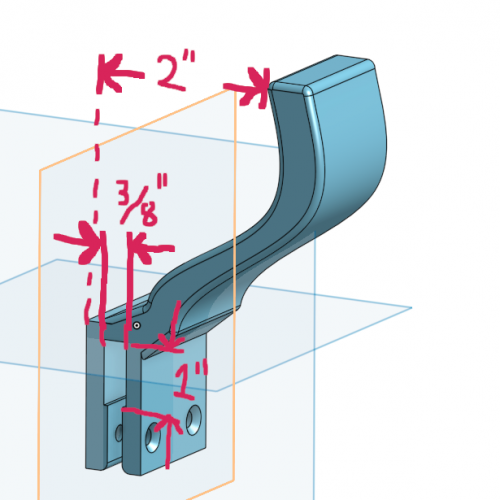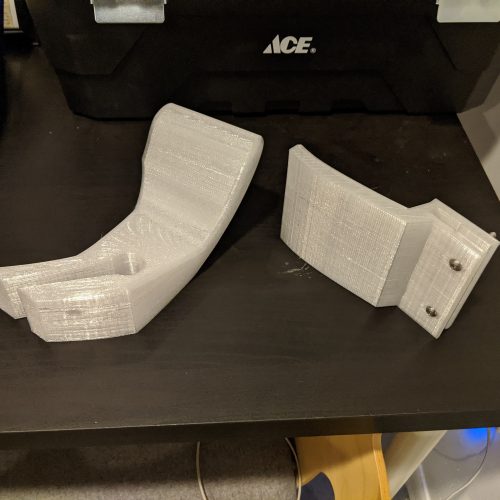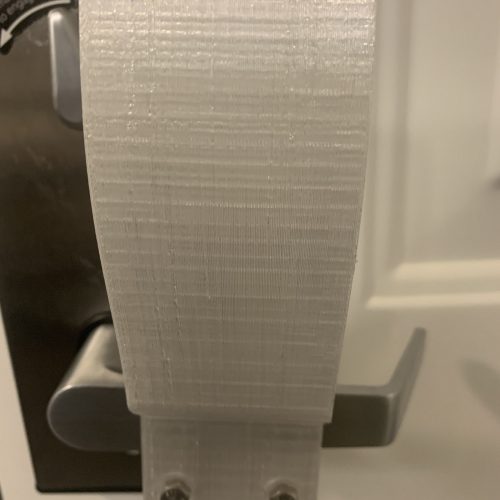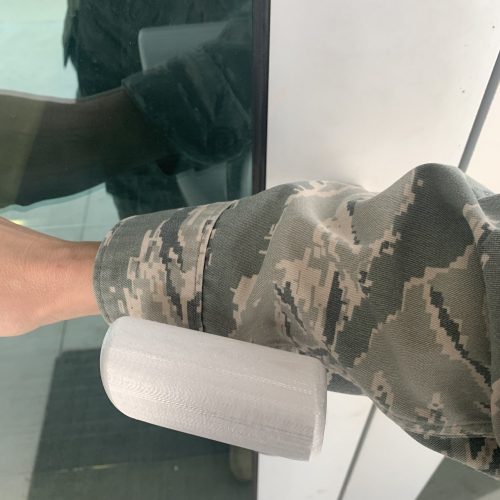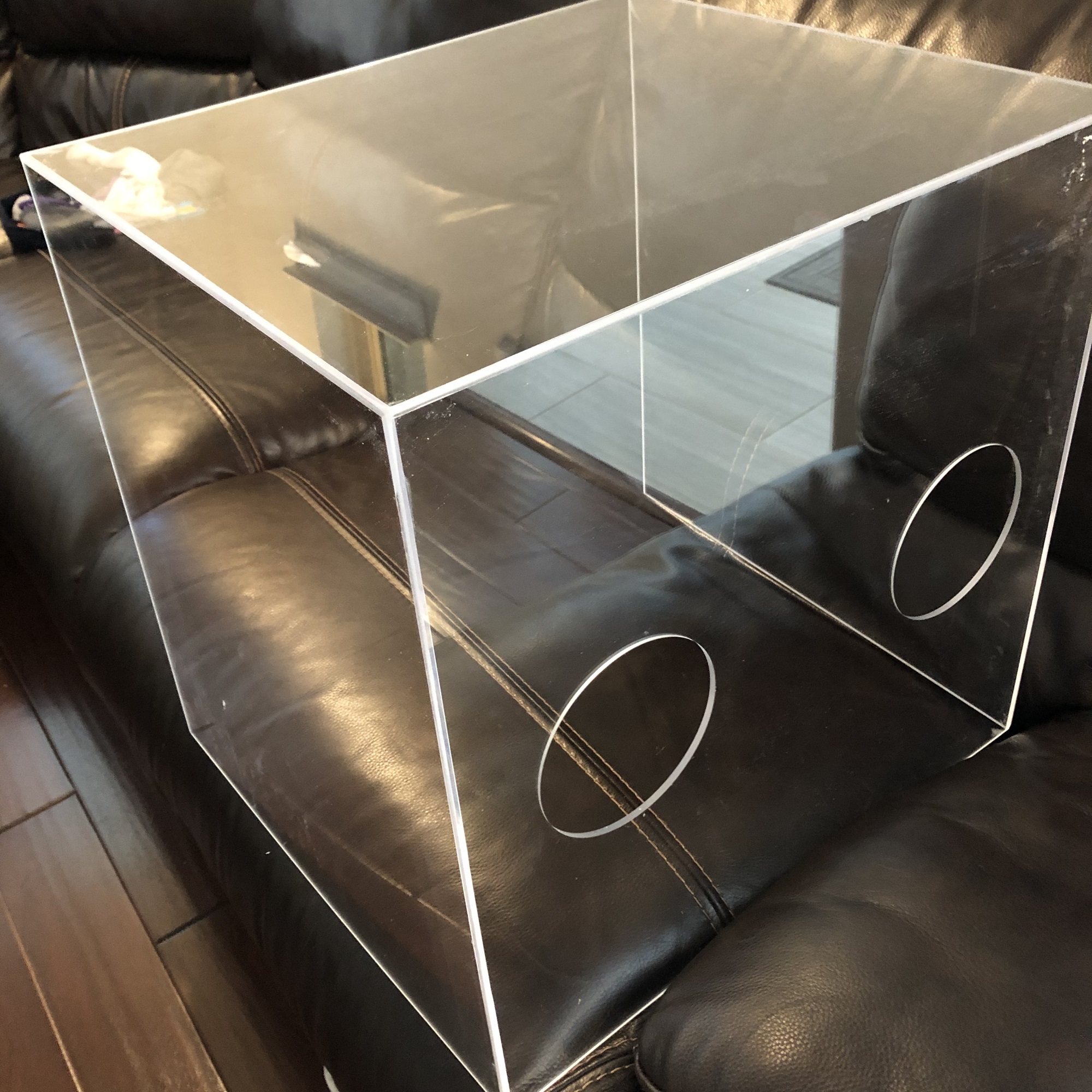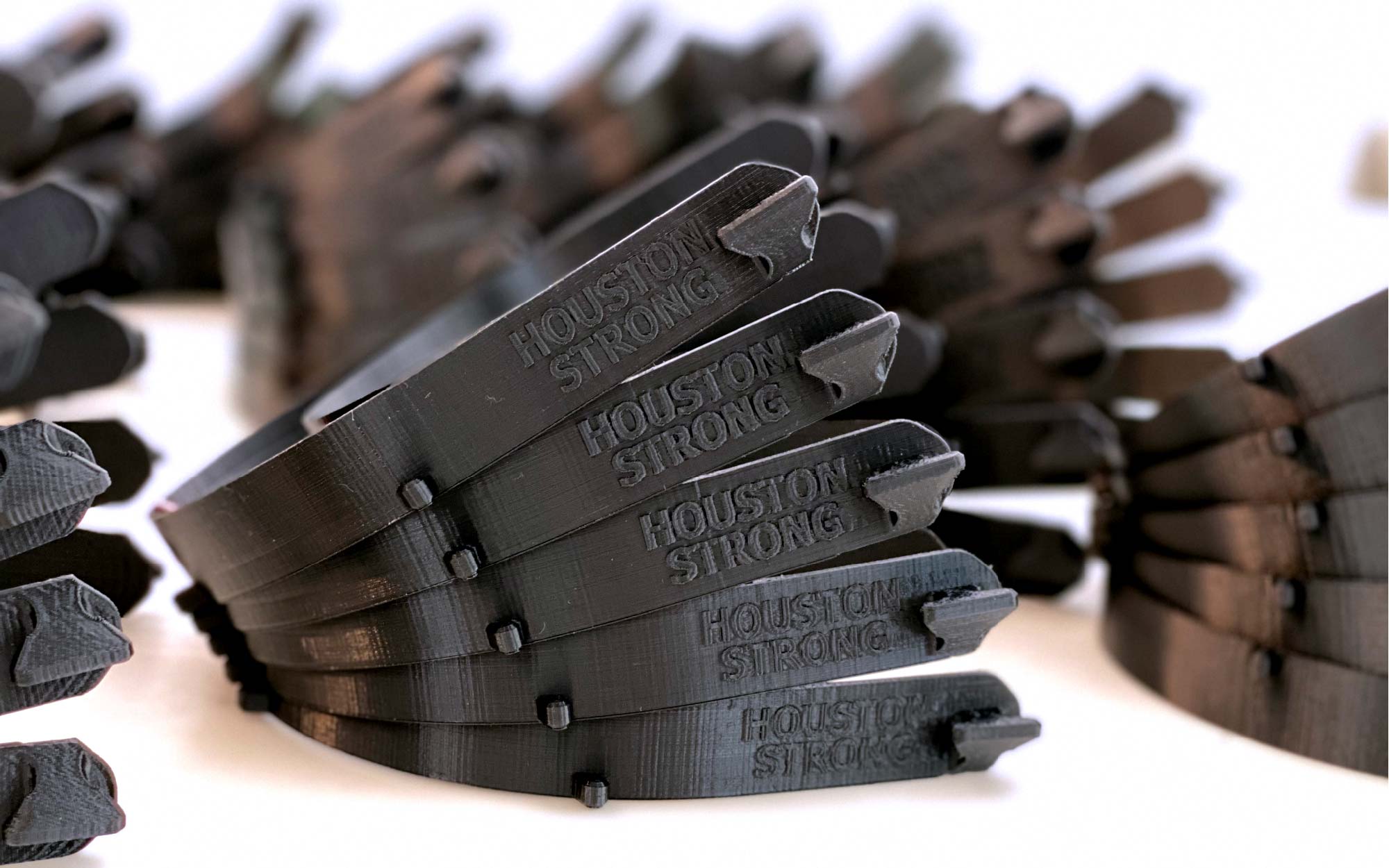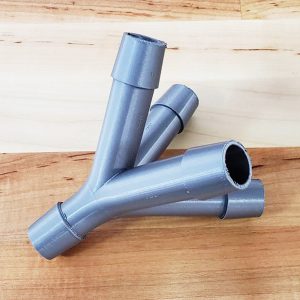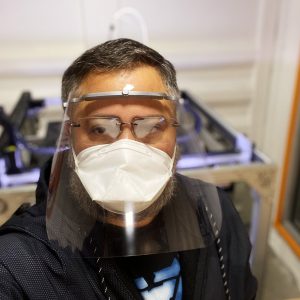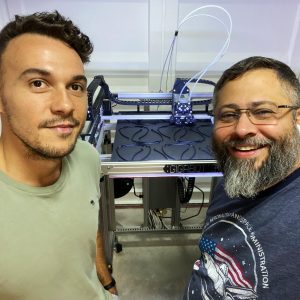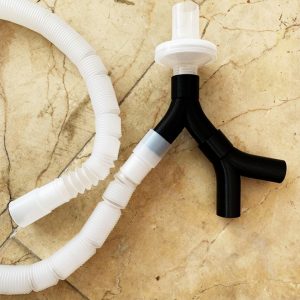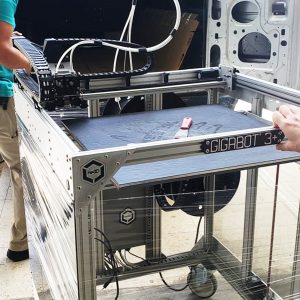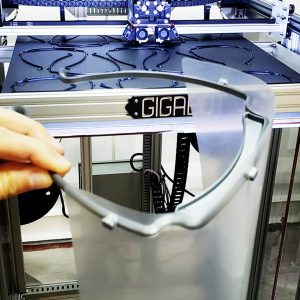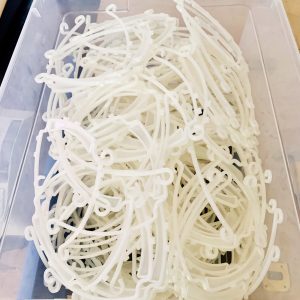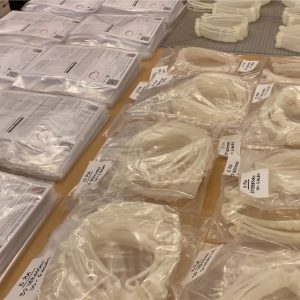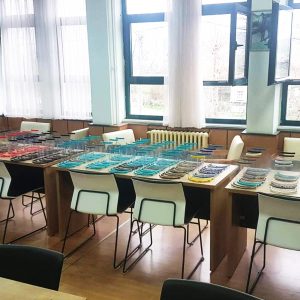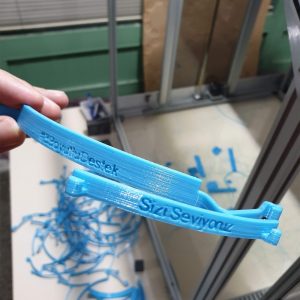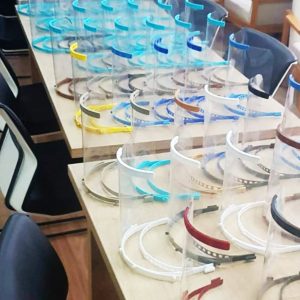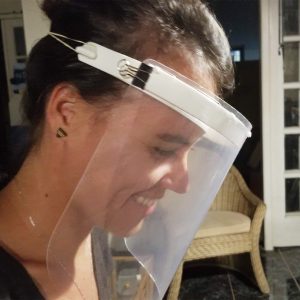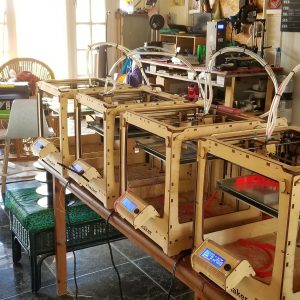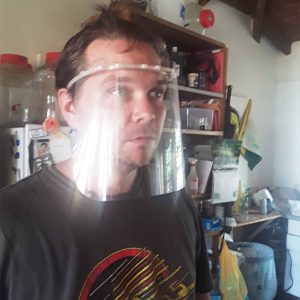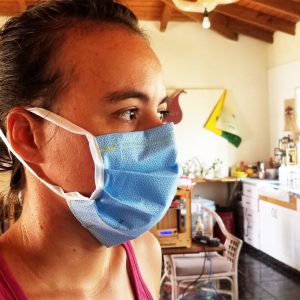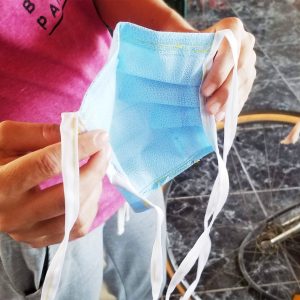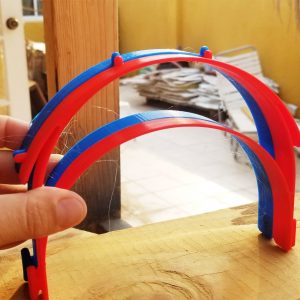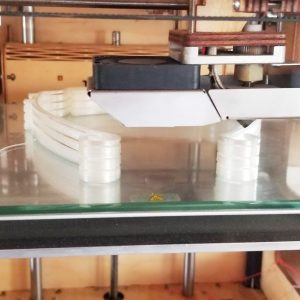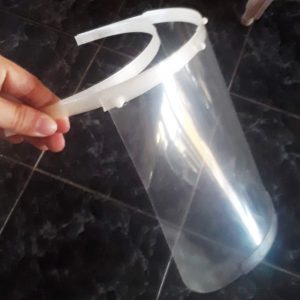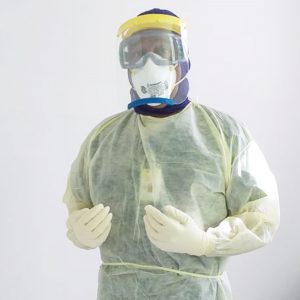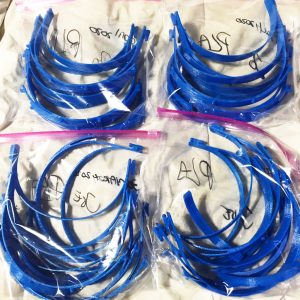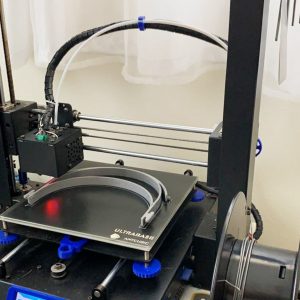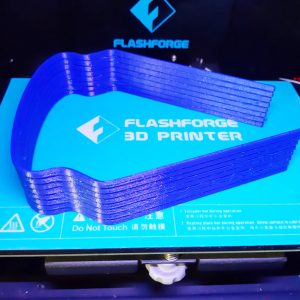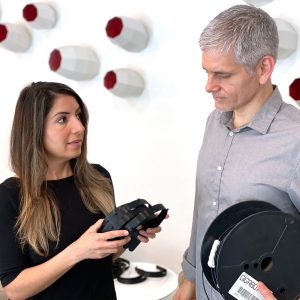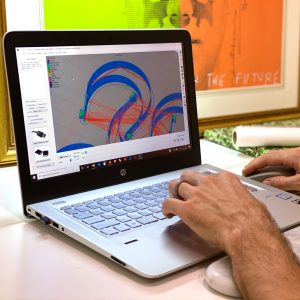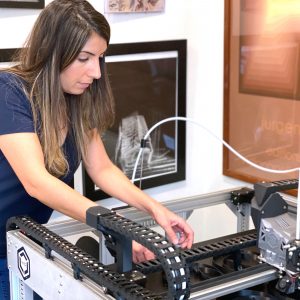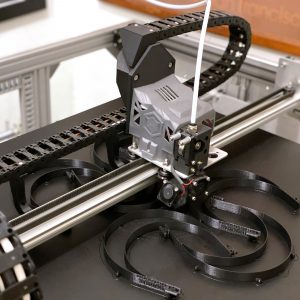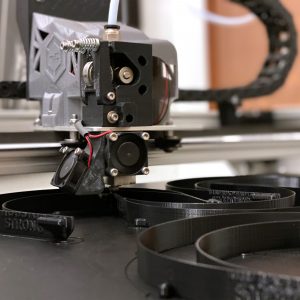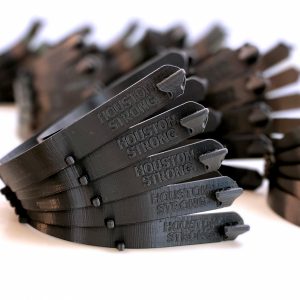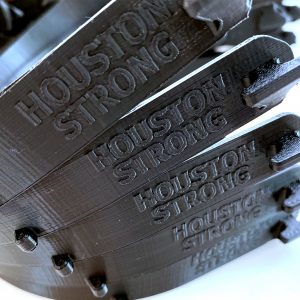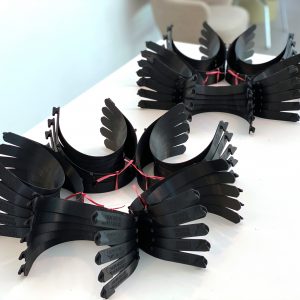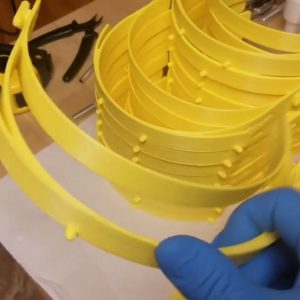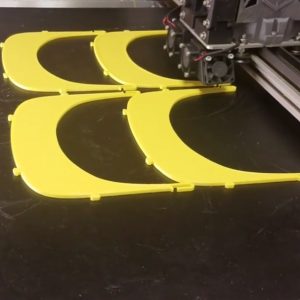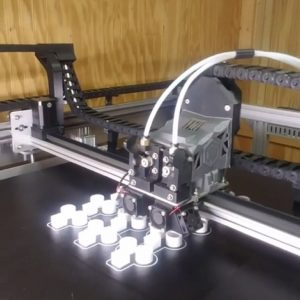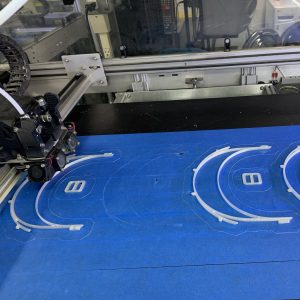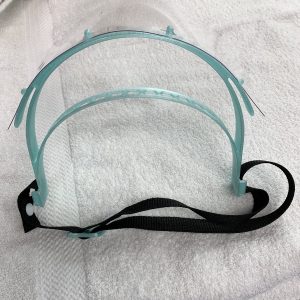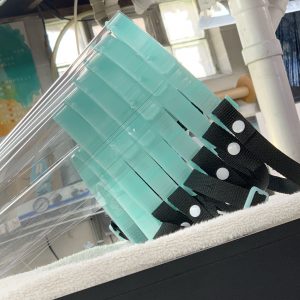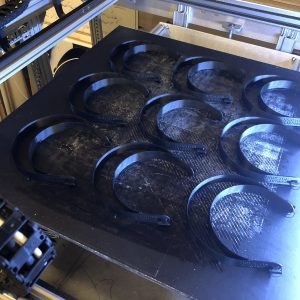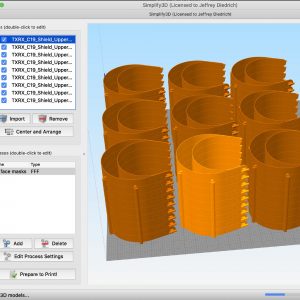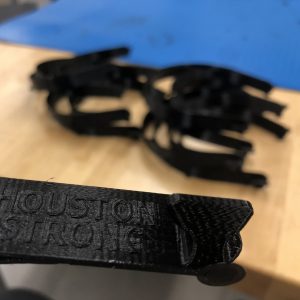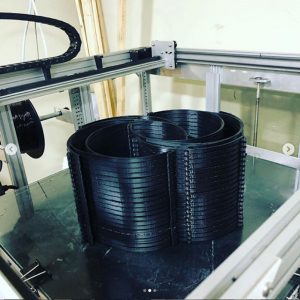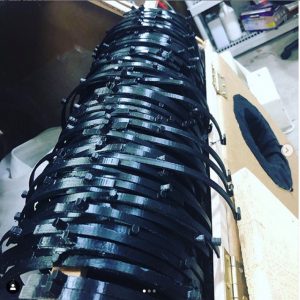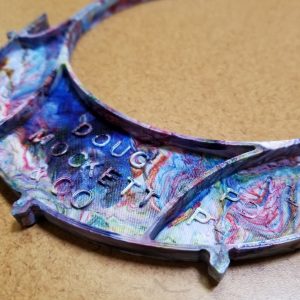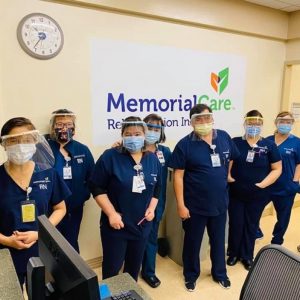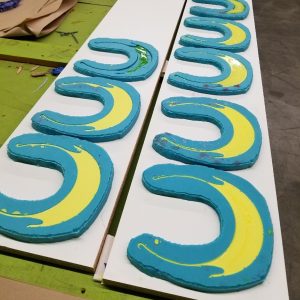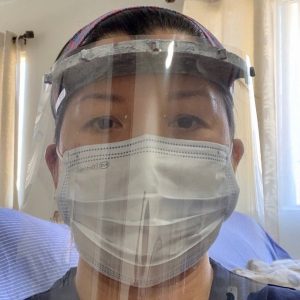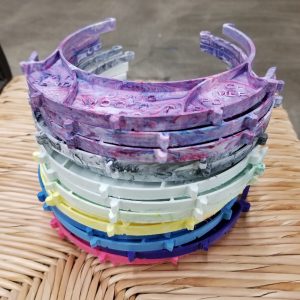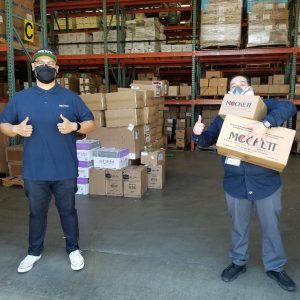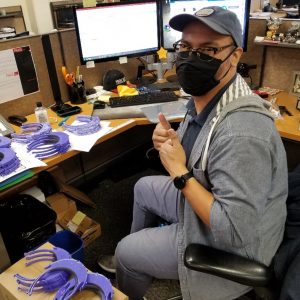“If the house catches fire, screw the diamonds – I gotta bring my steps.”
The stairs leading to the basement of Pamela Szmara’s house are what she’s referring to, and it’s what’s on them that’s so valuable. The treasure trove is visible only once you reach the bottom and look up. Covering the exposed wooden portions of the staircase are pen marks: WiFi networks and passwords, login information to unnamed accounts. It’s a physical password manager.
It may seem like an odd solution, but it fits neatly into the package that is Pam, owner of 3D printing service bureau Pamton 3D.
The basement is home to an ensemble of 3D printers, among them two Gigabot XLT’s, to whom Pam affectionately refers as “the girls.”
“Our Gigabots are named,” she explains. “They’re Gigi One and Gigi Two.” Spelled G-i-g-i, she clarifies, but pronounced GG.
“And when the third one gets here,” she continues, “she’ll be Gigi Three.”
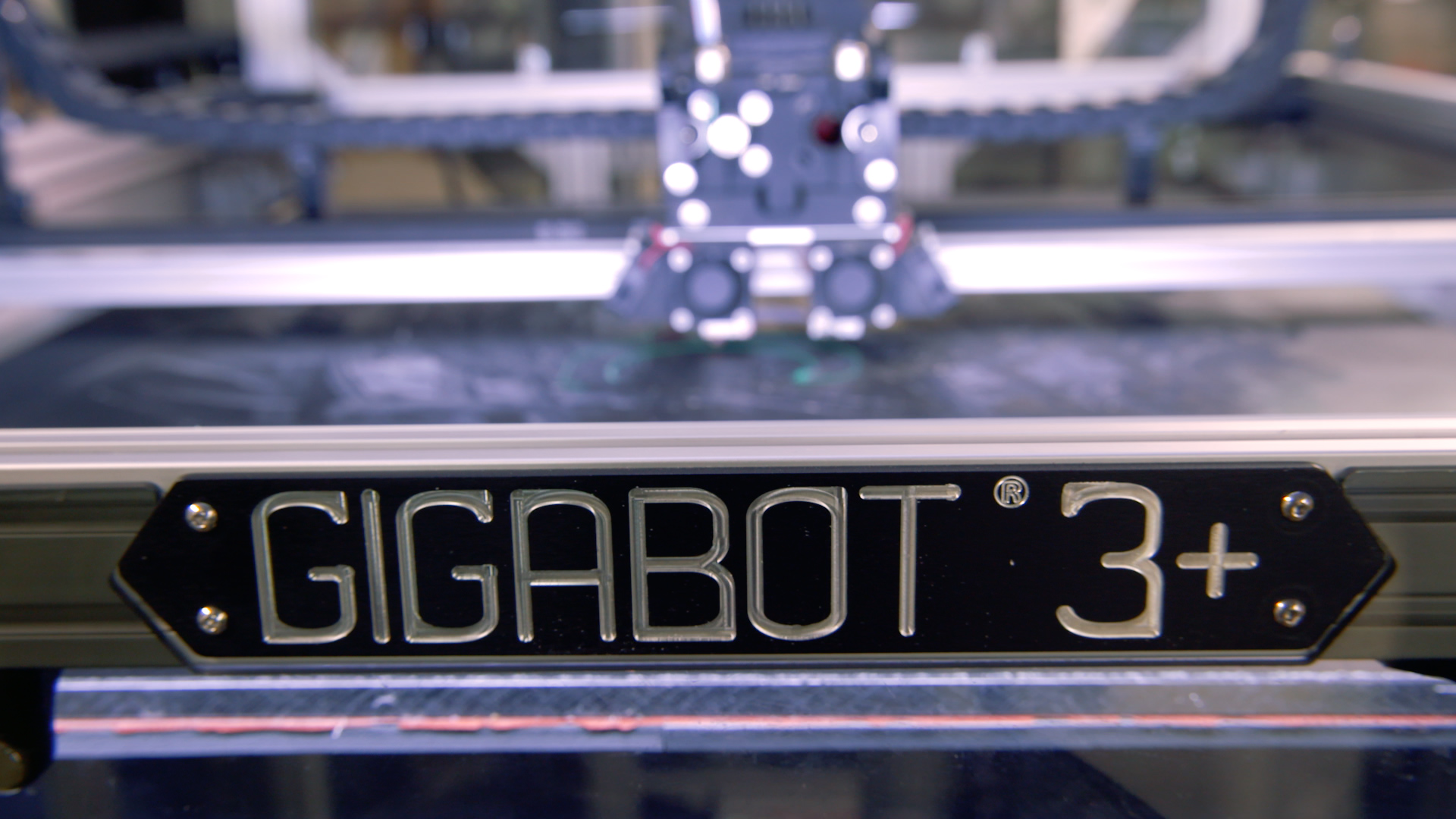
The Start
Pam and her husband Tony got their start in 3D printing roughly two decades ago by way of teeth.
“I’m a Certified Dental Technician,” explains Pam. “And dentistry embraced additive manufacturing.”
The introduction happened early in Pam’s career, working with Great Lakes Orthodontics, which paved the path of additive manufacturing in her life. She learned the ropes on PolyJet printers; dentistry requires ultra-high resolution that is not doable on most filament-fed, or FFF, machines. After working with Great Lakes Orthodontics for nearly 30 years, Pam ended up forging her own path, starting Pamton 3D almost ten years ago. She credits her first non-dental 3D printing job to JollyPets, a name that remains special to her in the company’s history.
As business grew while the Pamton production capacity remained the same, Pam realized something needed to change. “With the PolyJet printers, we were limited in size and materials,” she explains. “That was the big push for us to branch out into other areas of additive manufacturing.”
The Pamton production bunker lies beneath a house on a quiet residential street in Youngstown, Ohio. Pam talks of the struggles of the Rust Belt city, and praises the revitalization that Youngstown-based America Makes, a national accelerator for additive manufacturing, has brought to the landscape.
It was at an America Makes convention that Pam crossed paths with re:3D cofounder Matthew Fiedler. She bought Gigi One on the spot.
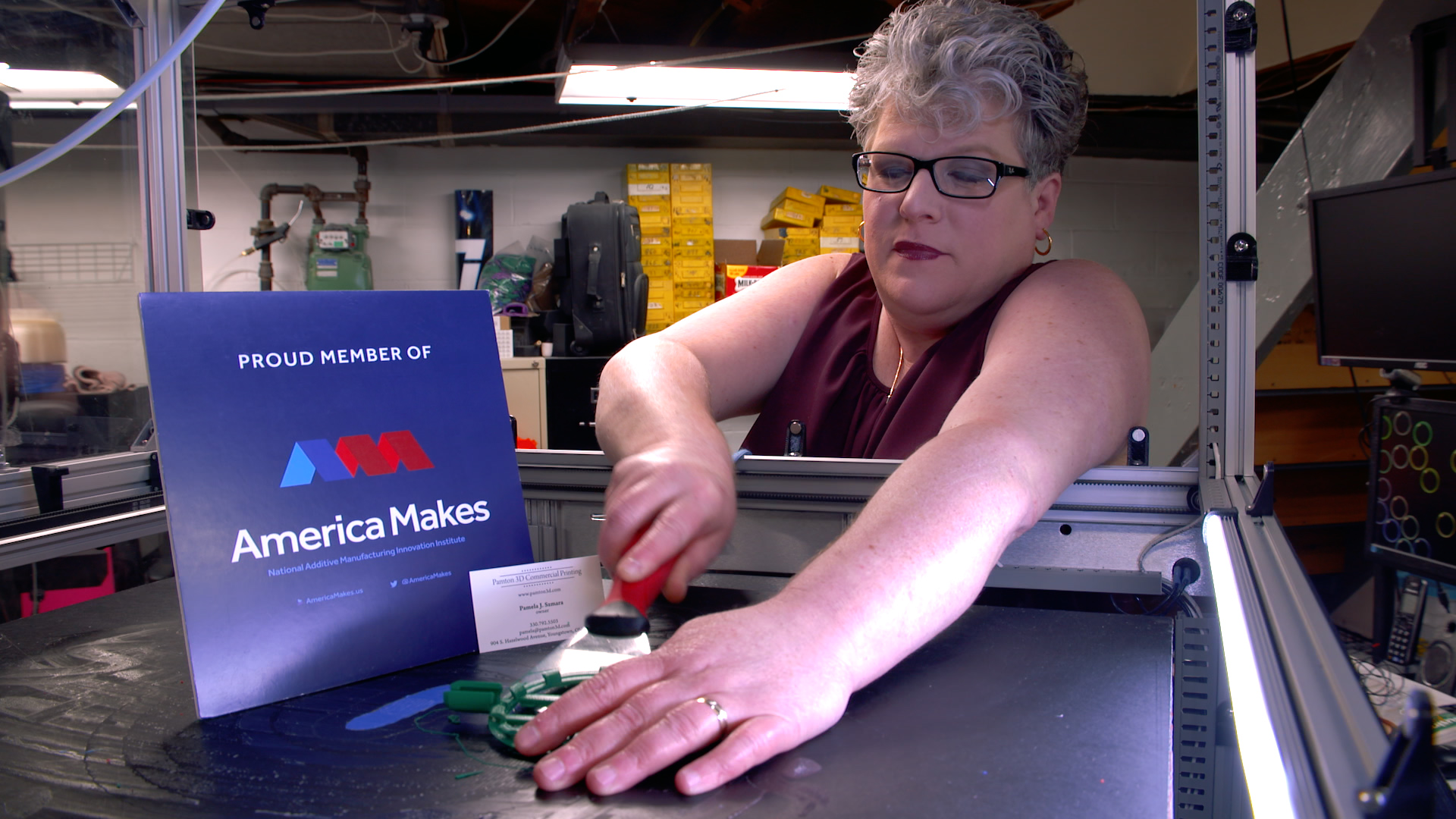
The build volume of Gigabot allowed them to better keep up with the demand of their growing contract print business by offering not only options for people looking to do larger prints, but also by doing small production batches for clients. It wasn’t long before they again found themselves pushed to their limits of production capacity, and Gigi Two entered the picture.
“We needed it. The workload…” Pam pauses. “It was amazing. You never turn down an opportunity to be involved in a project. And what was happening is that the deadlines were coming too close. And that’s a great problem to have.”
Having two Gigabots has taken a lot of stress off their plate: they’re able to run multiple projects at one time, break batches between the printers, and offer large-scale capabilities to their clients. “The advantage of the Gigabot has always been size. The companies are able to come to us with these large parts,” she says. Their longest print clocks in at over three weeks.
“The size is the thing that really sells a lot of the clients,” Pam says. “‘Woah, you can print it this large?’ ‘You can print that many pieces?’ Well yes, we can. And once companies hear about this, the work will continue to follow.”
And follow it has. Pam recounts the early days of their jump into large-scale filament printers, musing that life has never been the same since. The trajectory of their workload has been trending upwards ever since. “We had grown to where we needed the second printer,” she says, “and where we’re at right now, we will need a third.”
The Work
“From soup to nuts” is how Pam describes the Pamton 3D business model. “If it fits, we’re gonna print it,” she says.
They have done projects for large manufacturing facilities and for students, steel mills and environmentalists, construction companies and building restoration teams, for entrepreneurs who want to prototype as they bring a physical product to market. Pam recalls a job producing models for an environmental organization working to educate the public about how water should flow away from their homes and into reservoirs in order to better control pollution.
They’ve helped old industries threatened with obsolescence to replicate parts they need that are no longer being manufactured, components with no drawings or STL files. “We’re breaking new ground for them, and that’s the really exciting area of additive,” Pam muses.
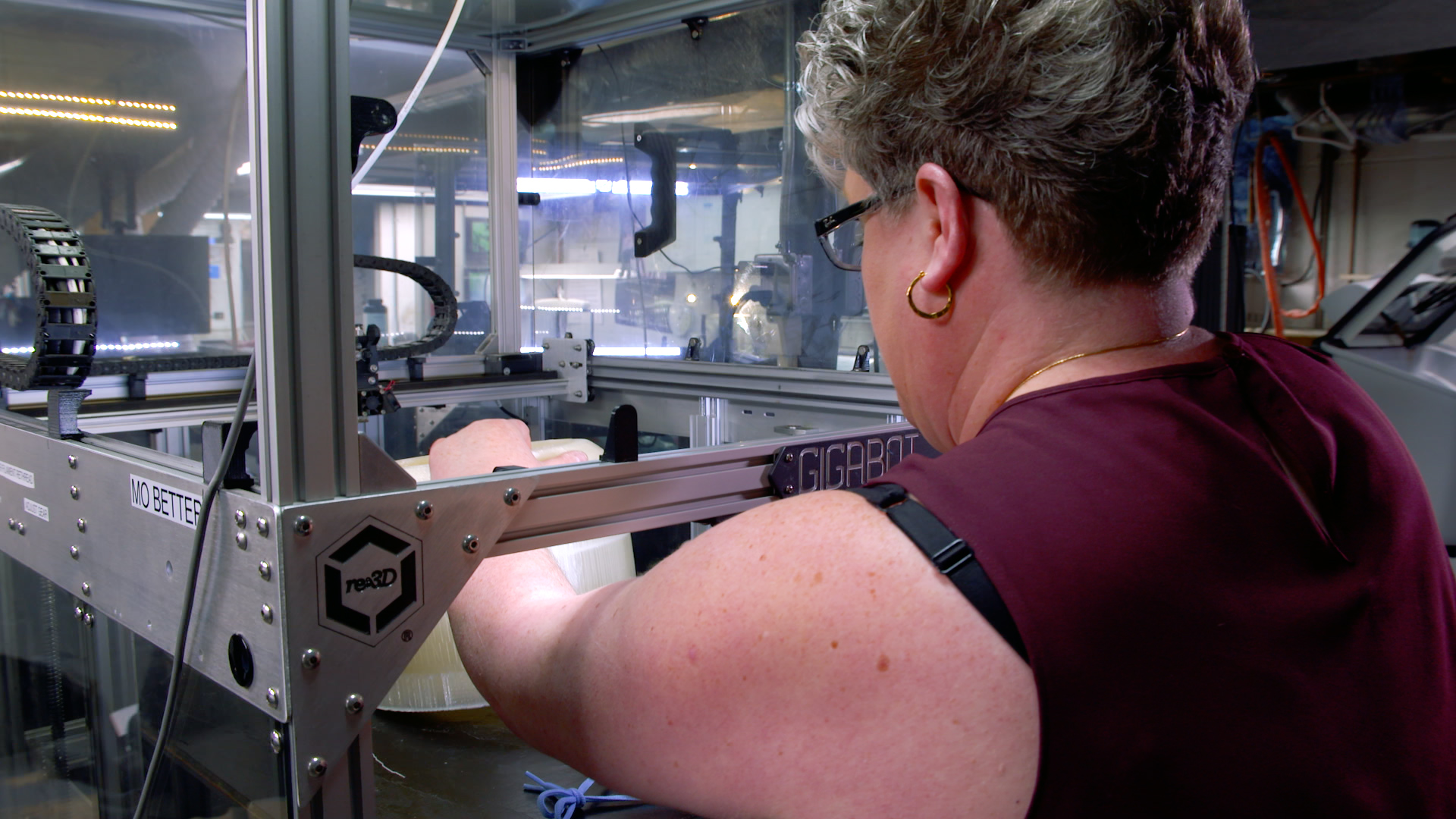
The darling of their client list is NASA Glenn, who approached them at a large additive manufacturing show in Cleveland looking to produce batches of prototypes of the new Compass Satellite.
Pam realizes that it might not make sense why one of the foremost scientific research institutions in the nation turned to a basement production facility to fulfill an order that they surely must have the capability to do themselves. Yes, NASA is doing 3D printing, Pam confirms. But – “The volume of parts that they needed,” she pauses, “they never would have been able to keep up with it.”
The beauty of Pamton 3D is that the task no longer falls on the business owner’s shoulders, whether a budding entrepreneur or a behemoth like NASA.
The Advice
“These are not plug-and-play instruments, they’re not plug-and-play toys,” Pam says, of 3D printers.
“You’re watching these four-year-olds on YouTube with the printer that their parents bought them…and it shows this four-year-old put the filament in and – whiz bang – there’s the part.” Pamton steps in to fill the chasm that lies between the internet persona of 3D printers as magical creation boxes and the reality of technology that takes time and dedication to master.
“With Pamton being a service bureau, we take the stress and the frustration away,” Pam explains. “It’s our job to make sure everything is running smoothly when the business owners are going to sleep at night.”
She means this quite literally.
The analogy of her Gigabots as “her girls” is more than just cutesy anthropomorphizing: the time the printers take up in her life and the attention she gives them is somewhat akin to children. “It’s like having a baby in the house or a new puppy in the house: you have to just get up and check on these things,” she explains. “It’s just a little bit of reassurance when you wake up in the middle of the night and just take a look at it and say, ‘Yep, everything’s running good,’ and you go back to sleep.” For bigger jobs or ultra-time-sensitive projects, she and Tony will take turns babysitting the printers practically around the clock.
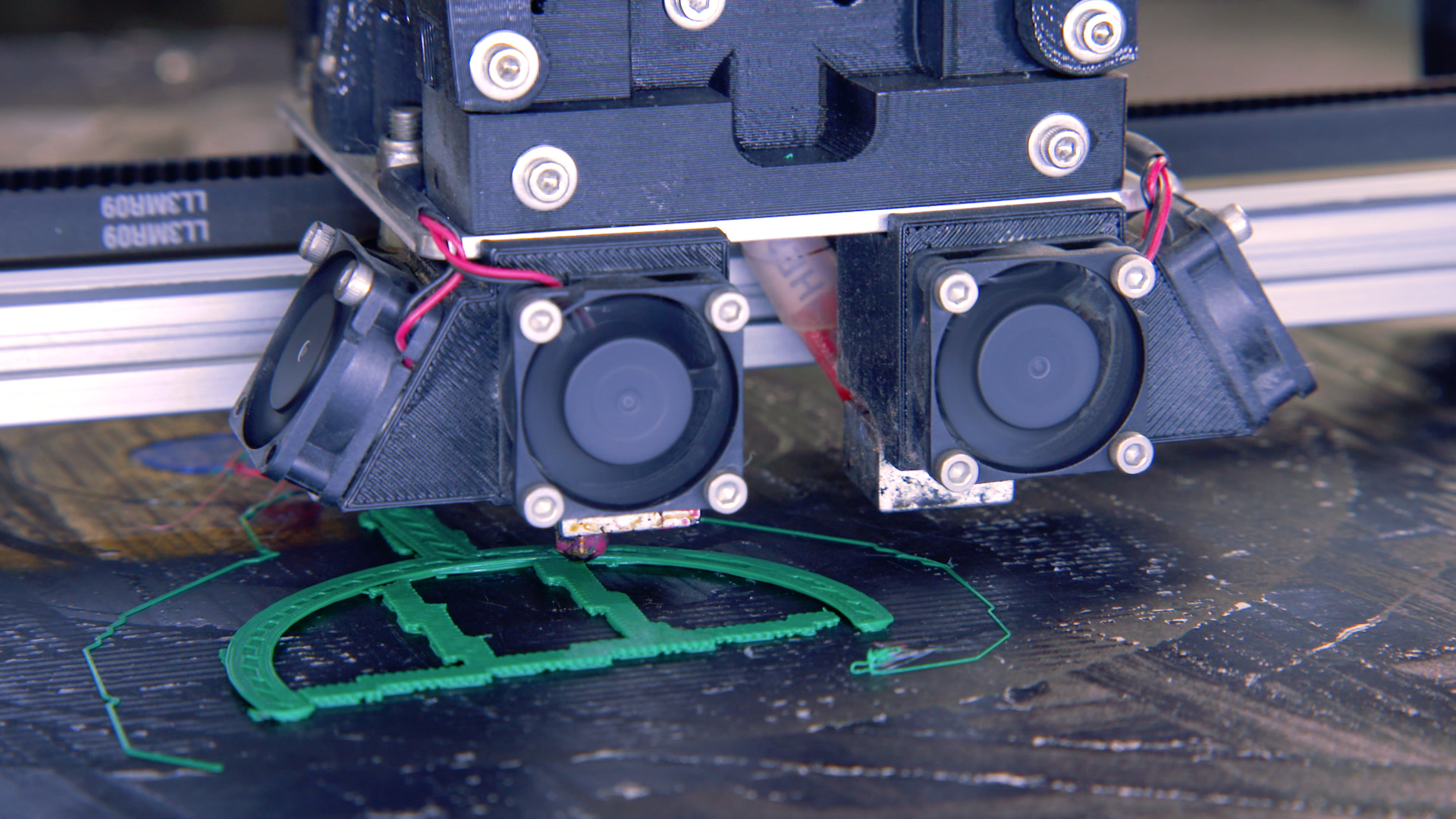
They’ve gotten much unsolicited advice on the topic of their basement as company headquarters, and Pam can agree that there are drawbacks. “But,” she says, “there are more pros than cons.” The ability to simply pop downstairs in the wee hours to check on a print – this is their advantage. “At 2 o’clock in the morning when the filament needs to be changed, it’s being changed.”
With this all-hours accessibility, she explains, they can quote clients ultra-competitive turnaround times on projects. There is no way to speed up a print beyond its inherent print time, of course, but their down-time between batches and jobs is slim to none. Says Pam, “We lose no time.”
Of course there are disadvantages to living with your work, she acknowledges. “It’s always there,” she explains. “They take maintenance. It just isn’t something that’s a walk through the park.”
For anyone toying with the idea of bringing a 3D printer home to start a business, she’s quick to jump to advice. “Try it,” she says. “If it doesn’t work out, you can always move it to another facility, but it’s something to consider.” But, she stresses, don’t underestimate the work this will entail. “It is time-consuming, and if you’re not willing to invest the time and the money into this, it will not succeed.”
Pam has more words of wisdom where this came from, and with over twenty years in the additive space – both with PolyJet and FFF printers – she’s a good person to give it.
She gives herself a dose of her own advice every day in the form of helpful reminders stuck to the side of each printer. They range from technical prompting – Clean gear after filament rethread – to attitude checks – Be patient.
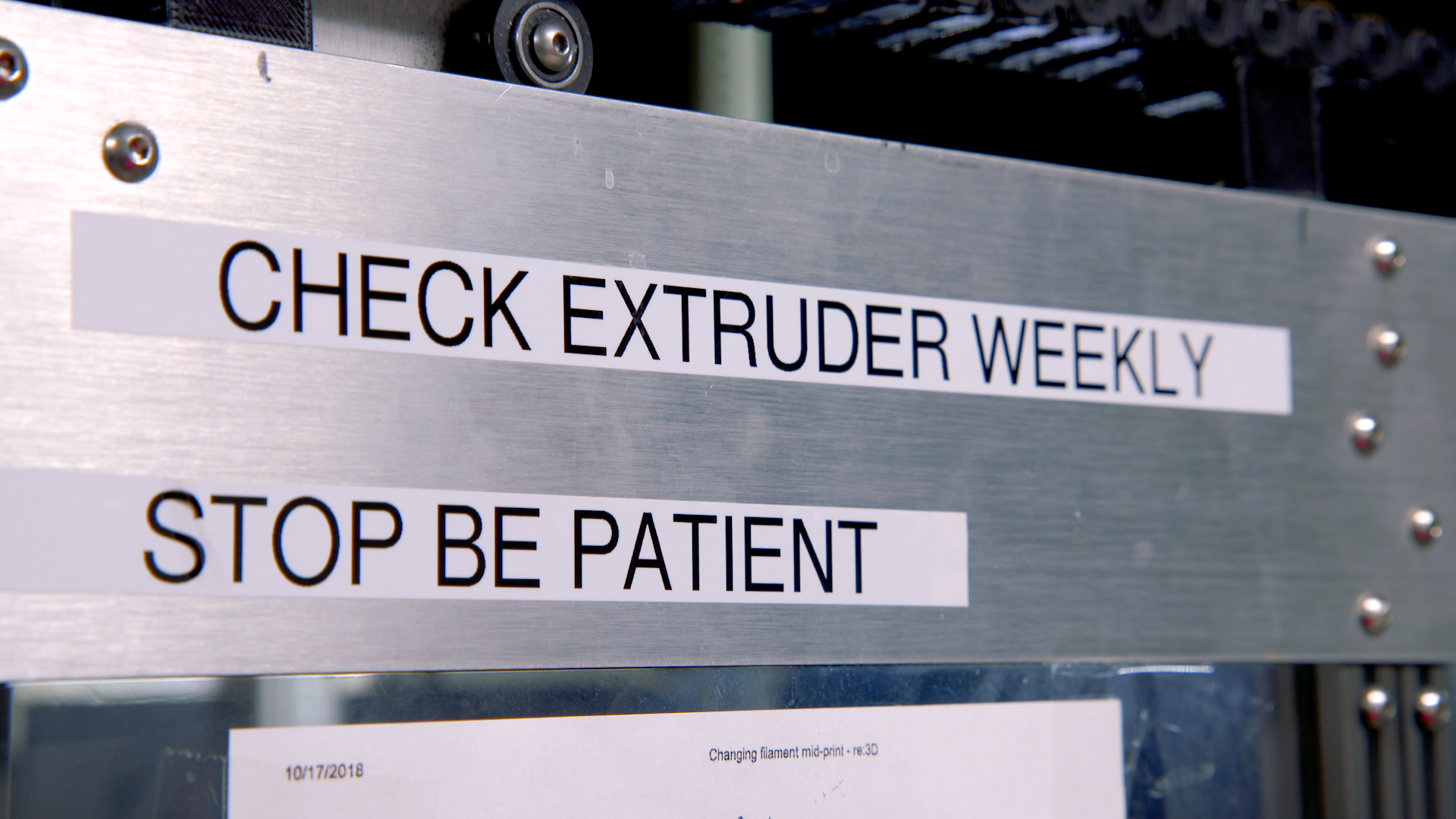
“Be patient,” Pam says. “I cannot stress that enough.”
This mantra becomes all the more important when a deadline is rapidly approaching and she has a customer breathing down her neck. When something unexpected goes awry, calm amidst the chaos is what allows her to maintain a cool head as she works her way down the checklist of what could be causing the problem.
As far as other advice for people new to 3D printing, Pam stresses not skimping on quality, both of equipment and of materials. “Filament will make or break you,” she says. She understands it can be tempting to go with the budget option. Don’t, she says. “It will catch up with you in the end.” She found a filament she likes and has stuck with the manufacturer, maintaining a close relationship with John Hosbach of Village Plastics. “John knows his filament,” she says. “It’s unbelievable. Our prints look like spun silk when we get finished with them.”
Pam has come to understand that 3D printing is never an exact science, and that with so many factors playing into print quality – from filament source to the weather that day – even experienced additive manufacturing veterans can wake up to a spaghetti bowl. Starting with a level playing field in the form of reliable equipment and materials rules out preventable problems that will save valuable sanity in the troubleshooting process. “That’s a great starting point, to have good equipment and good filament,” she stresses.
“But,” she goes on, “patience is by far the most important thing you need to have.”
The Lessons
“Oh, the printers will teach you lessons every day.”
The past twenty years of additive manufacturing have been a journey of learning for Pam. “You have to be teachable,” she says. “Once you realize that, then the sky’s the limit. But if you always feel that you know it all, then you’ll never grow, you’ll never advance.”
It helps, Pam says, that the 3D printing community is so supportive and eager to assist their peers. “With this particular community of individuals that we’ve met, everyone is very helpful,” she muses. “YouTube videos, directions – people are willing to talk and willing to help you, which is a huge asset. And when you have a support team like that, it makes you want to grow.”
The pace of the industry can sometimes be overwhelming, she says: technology changes at such a clip that it’s hard to stay at the forefront of it all. “But yet, at the same time, everyone’s been so helpful,” she says. “Like, ‘Hey, did you hear about this new material on the market?” Or, ‘What’s the temp on your extruder? What’s your speed?’ It’s an incredible community to work with.”
The payoff is reflected in the work they do. A 500+ hour print under their belt. NASA on their client list. Fluency in a wide lineup of materials, from flexible filament, to Nylons, to Teflon. “None of this was ever dreamt of when we bought the first printer,” Pam says.
It’s clear that the journey has held its fair share of ups and downs, but it seems that the right attitude is at the core of it all. “Additive will teach you patience,” she reiterates. “Additive will teach you persistence. Additive will keep you on your toes 24/7.”
She maintains a very even head about it all, and recognizes that things could change at any moment for her. “It’s terrifying and at the same time it’s exhilarating. When things are rolling, life is great.”
When I asked what advice she would give to a new 3D printer owner who was thinking about starting a business like hers, her response was quick.
“Make sure you have a lot of liquor in the facility.”
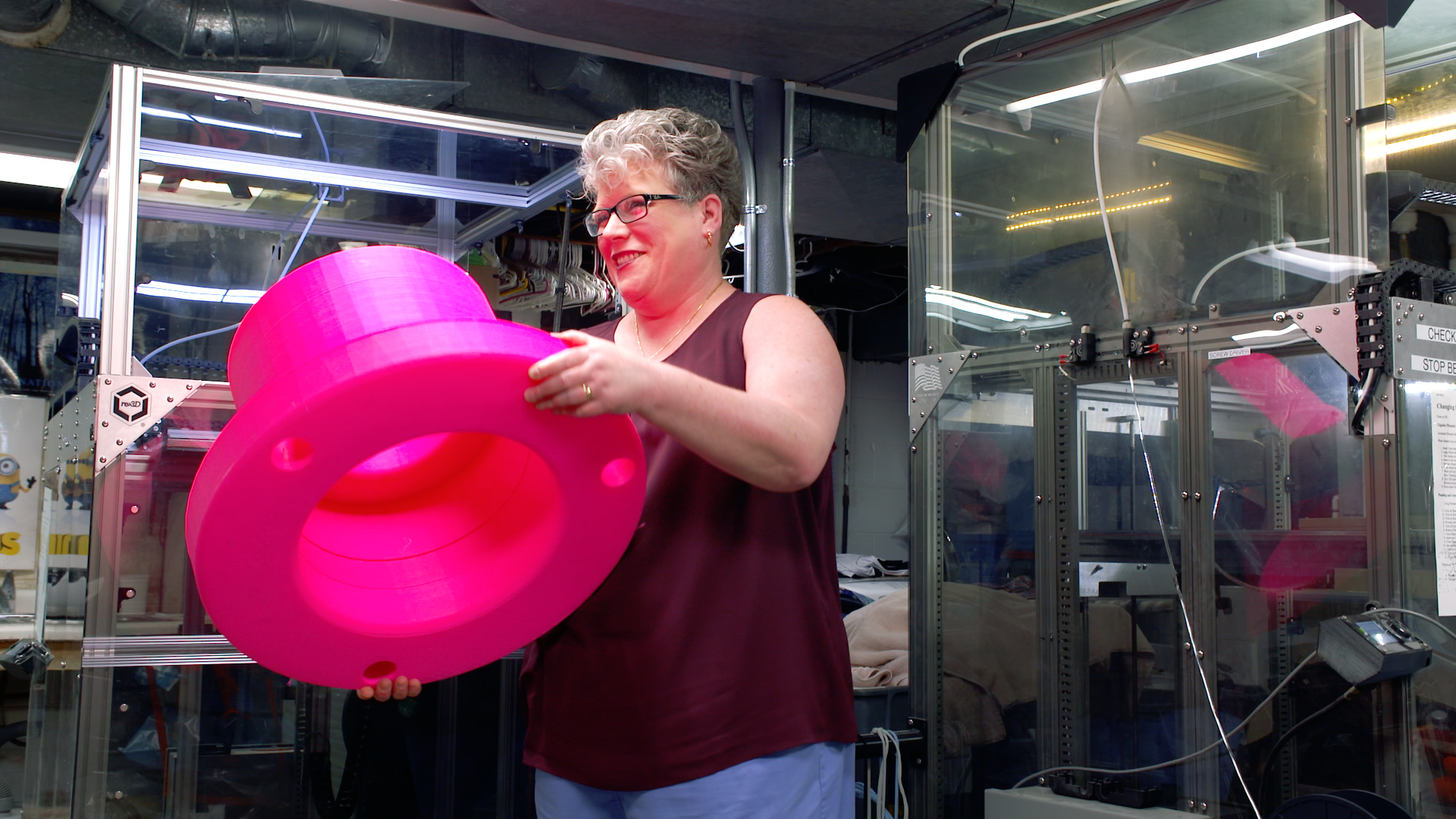
Learn more about Pamton 3D: https://pamton3d.com/
Morgan Hamel
Blog Post Author



